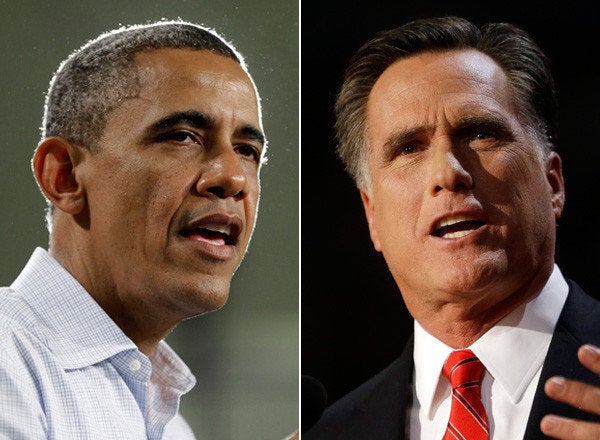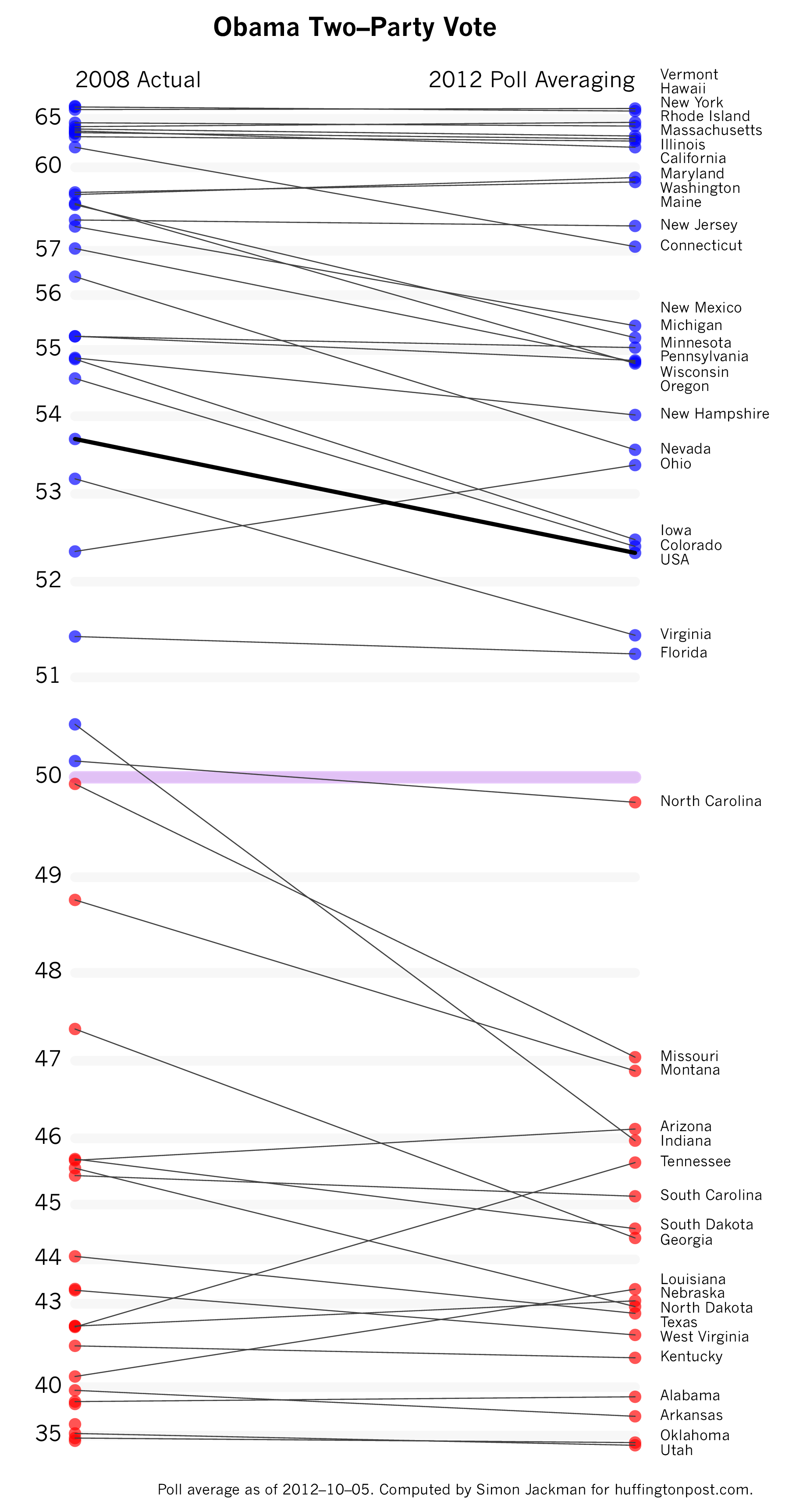
I thought it would be helpful to give a big picture review of the state of play before we're starting to see polls with post-debate field periods.
The graph below compares two-party vote share for Obama in 2008, by state, with last night's estimates from our model-based poll averaging. Pre-debate and nationwide, Obama was performing about a percentage point below the 2008 election result, from just over 53 percent (2008) to just over 52 percent (current estimate from our model-based poll averaging). Most states appear to be swinging away from Obama by a similar amount. This small amount of swing isn't translating into many states changing hands relative to 2008. A large win for Obama in the Electoral College is the clear implication of the current polling and our modeling.

Immediately prior to the debate, just two states appeared to be set to change hands: Indiana and North Carolina. Indiana has not looked competitive this cycle, and our model currently puts Obama on about 46 percent of the two-party vote. North Carolina has been bouncing around the 50-50 mark for months. Of all "toss-up" states this cycle, it is the state over which we have the most uncertainty. Our North Carolina estimate of Obama's share of the two-party vote currently lies just below 50 percent (but there is a 40 percent chance Obama wins the state, reflecting both how close the estimate is to 50-50 and uncertainty in the estimate).
The story in Ohio bucks the national trend. Pre-debate polling (plus our model) has Obama actually doing better than he did there in 2008; our model-based estimate of Obama's two-party vote share is currently just north of 53%, a percentage point better than the 2008 outcome. This fact underscores the difficulty faced by the Romney campaign. The pivotal role of Ohio in modern presidential elections is well-known (e.g., JFK was the last candidate to win the presidency without carrying Ohio).
For Ohio to be swinging toward Obama, against the national tide, indicates that (1) the national tide isn't big enough to deliver Romney at this point; (2) the small swing towards Romney isn't big enough in the right states. Bigger than average swings in Indiana, Missouri, Montana, Texas, Oklahoma and Utah aren't going to get the job done for Romney. Nor does it especially help Romney that blue states like Connecticut and Oregon are swinging a little harder than average; these states remain safely in the Obama column. The swing states just aren't swinging enough for Romney so as to change the Electoral College picture. Indeed, in one or two cases (most vividly, Ohio), the swing is the wrong way.
The first debate was widely scored as a win for Romney. Sure, Romney gave us a performance better than you'd expect from a candidate how is behind 4.5 points. He might have done enough to get voters to give him a second look. But the state of play in the campaign ahead of the debate was so bad for Romney, I wonder if Romney did enough.
The subject matter of the first debate -- the economy and domestic policy -- is presumably good terrain for Romney. If Romney can't move the needle after engaging Obama on those matters -- and, according to many snap polls, besting Obama -- when will he? For this reason, we'll be watching the polls very closely today and in the days ahead, as we start to pick up more polls with post-debate field periods.